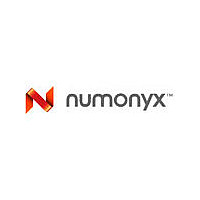N25Q128A13BSF40F NUMONYX, N25Q128A13BSF40F Datasheet - Page 131

N25Q128A13BSF40F
Manufacturer Part Number
N25Q128A13BSF40F
Description
IC SRL FLASH 128MB NMX 16-SOIC
Manufacturer
NUMONYX
Series
Forté™r
Datasheet
1.N25Q128A13B1240F.pdf
(157 pages)
Specifications of N25Q128A13BSF40F
Format - Memory
FLASH
Memory Type
FLASH
Memory Size
128M (16M x 8)
Speed
108MHz
Interface
SPI, 3-Wire Serial
Voltage - Supply
2.7 V ~ 3.6 V
Operating Temperature
-40°C ~ 85°C
Package / Case
*
Lead Free Status / RoHS Status
Lead free / RoHS Compliant
Available stocks
Company
Part Number
Manufacturer
Quantity
Price
Company:
Part Number:
N25Q128A13BSF40F
Manufacturer:
MICRON
Quantity:
15 000
Part Number:
N25Q128A13BSF40F
Manufacturer:
MICRON
Quantity:
20 000
N25Q128 - 3 V
10
Note:
XIP Operations
XIP (eXecution in Place) mode is available in each protocol: Extended SPI, DIO-SPI, and
QIO-SPI. XIP mode allows the memory to be read simply by sending an address to the
device and then receiving the data on one, two, or four pins in parallel, depending on the
customer requirements. It offers maximum flexibility to the application, saves instruction
overhead, and allows a dramatic reduction to the Random Access time.
You can enable XIP mode in two ways:
Setting to 0 the bit 3 of the Volatile Configuration Register the device is ready to enter in XIP
mode right after the next fast read instruction (by 1, 2 or 4 pin).
While acting on the Non Volatile Configuration Register (bit 11 to bit 9, depending on which
XIP type is required, single, dual or quad I/O) the memory enters in the selected XIP mode
only after the next power-on sequence. The Non Volatile Configuration Register XIP
configuration bits allows the memory to start directly in the required XIP mode (Single, Dual
or Quad) after the power on.
The XIP mode status must be confirmed forcing the XIP confirmation bit to "0", the XIP
confirmation bit is the value on the DQ0 pin during the first dummy clock cycle after the
address in XIP reading instruction. Forcing the bit "1" on DQ0 during the first dummy clock
cycle after the address (XIP Confirmation bit) the memory returns in the previous standard
read mode, that means it will codify as an instruction code the next byte received on the
input pin(s) after the next chip select. Instead, if the XIP mode is confirmed (by forcing the
XIP confirmation bit to 0), after the device next de-selection and selection cycle, the memory
codify the first 3 bytes received on the inputs pin(s) as a new address.
Besides not confirming the XIP mode during the first dummy clock cycle, it is possible to exit
the XIP mode by mean of a dedicated rescue sequence.
For devices with a feature set digit equal to 2 or 4 in the part number (Basic XiP), it is not
necessary to set the Volatile Configuration Register bit 3 to enter XIP mode: it is possible to
enter XIP mode directly by setting XIP Confirmation bit to 0 during the first dummy clock
cycle after a fast read instruction.See
Figure 102. N25Q128 Read functionality Flow Chart
Using the Volatile Configuration Register: this is dedicated to applications that boot in
SPI mode (Extended SPI, DIO-SPI or QIO-SPI) and then during the application life
need to switch to XIP mode to directly execute some code in the flash.
Using the Non Volatile Configuration Register: this is dedicated to applications that
need to boot directly in XIP mode.
Section 16: Ordering
Micron Technology, Inc., reserves the right to change products or specifications without notice.
information.
©2010 Micron Technology, Inc. All rights reserved.
XIP Operations
131/157












